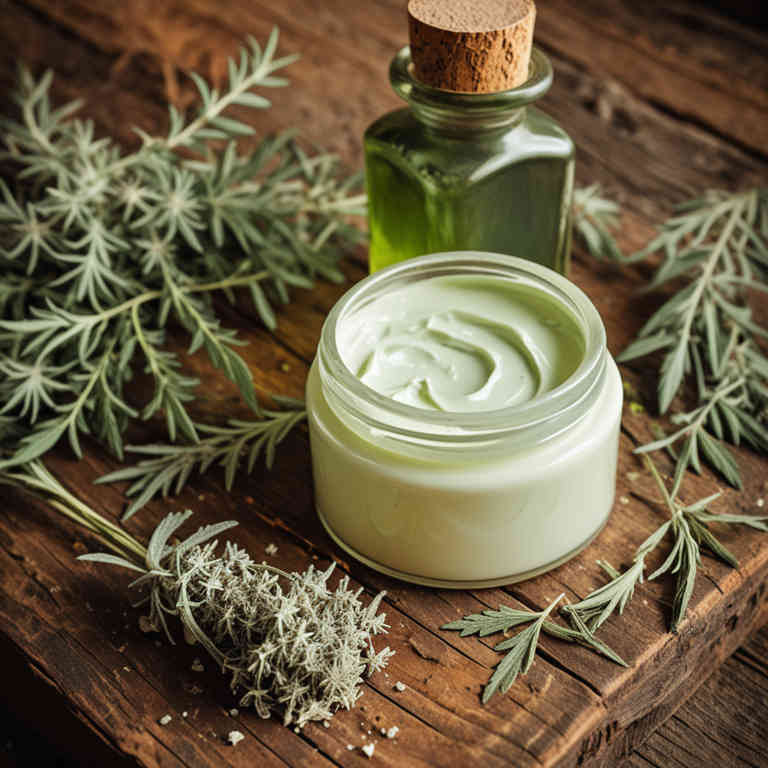Artemisia absinthium cream for medicinal use

Artemisia absinthium cream is a topical herbal preparation made from the dried leaves and flowers of the wormwood plant.
It is traditionally used in herbalism to treat skin conditions such as eczema, psoriasis, and fungal infections due to its antifungal and anti-inflammatory properties. The cream is often applied directly to the affected area to soothe irritation and promote healing. It is also believed to help with digestive issues when used internally, though it is more commonly applied externally.
This preparation is valued for its natural compounds that support skin health and immune function.
Uses
Artemisia absinthium cream has been used to treat various skin conditions and ailments throughout history.
Historically, it was valued in traditional medicine for its antiseptic and anti-inflammatory properties, often applied to wounds and skin irritations. In ancient times, it was also used to alleviate symptoms of malaria and other fevers, though its efficacy in these contexts remains debated. Modern applications include its use in topical treatments for eczema, psoriasis, and fungal infections due to its potential antimicrobial effects.
Today, it is increasingly sought after in natural and alternative medicine for its purported soothing and healing properties.
Benefits
Artemisia absinthium cream has health benefits such as reducing inflammation, supporting skin health, and potentially aiding in the treatment of certain skin conditions.
This herbal preparation is known for its antiseptic and antimicrobial properties, which can help in preventing infections and promoting healing. It may also have a calming effect on the skin, making it useful for soothing irritations and redness. The presence of compounds like thujone and flavonoids contributes to its therapeutic effects.
However, it should be used with caution and under the guidance of a healthcare professional to ensure safety and effectiveness.
Constituents
Artemisia absinthium cream active constituents include compounds such as flavonoids, sesquiterpene lactones, and volatile oils.
These components are known for their potential anti-inflammatory, antimicrobial, and antifungal properties. The cream may support skin health by reducing inflammation and promoting healing. It is often used topically for conditions like eczema, psoriasis, and fungal infections.
However, it should be used with caution due to possible skin irritation and interactions with other medications.
Preparation
To make Artemisia absinthium cream, first gather fresh or dried Artemisia absinthium leaves and grind them into a fine powder.
Next, steep the powder in a mixture of water and a carrier oil, such as olive oil, for several weeks to allow the active compounds to infuse into the oil. After straining the mixture, blend the infused oil with beeswax and a small amount of coconut oil to create a stable cream base. Finally, pour the mixture into a clean container and store it in a cool, dark place.
This cream can be used topically for its potential anti-inflammatory and skin-soothing properties.
Side Effects
Artemisia absinthium cream may lead to gastrointestinal discomfort, including nausea, vomiting, and diarrhea, due to its high concentration of compounds like thujone.
It can also cause skin irritation or allergic reactions in some individuals, especially with prolonged use. The presence of volatile oils may interact with certain medications, potentially leading to adverse effects. Long-term use might affect the central nervous system, causing dizziness or headaches.
It is important to consult a healthcare professional before using this preparation, especially for those with pre-existing health conditions.